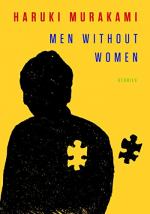|
This section contains 1,528 words (approx. 4 pages at 400 words per page) |

|
Point of View
“Drive My Car,” “Scheherazade,” “Kino,” and “Samsa in Love” are all told in standard third-person past with limited omniscience. This narrative perspective puts the focus on the content of the story rather than its particular style. The central characters in “Drive My Car,” “Kino,” and “Samsa in Love” are all also the central characters to whom the narration is limited, which is standard form for most third-person past with limited omniscience stories. In “Scheherazade,” however, the narrator is limited to Habara, but he is not the main character; he is a device that acts as a frame to set the stage for Scheherazade to tell her stories, which feature herself as a main character. This complicates the typical third-person story formula and draws attention to the act of storytelling itself, which is, of course, a major theme in "Scheherazade."
“Yesterday” and “An Independent Organ” are...
|
This section contains 1,528 words (approx. 4 pages at 400 words per page) |

|




